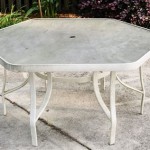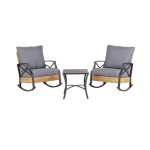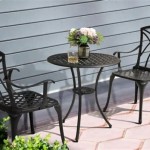Decorating Patio With Potted Plants: A Comprehensive Guide
Enhancing a patio with potted plants is a worthwhile endeavor that can transform an otherwise austere outdoor space into a vibrant and inviting extension of the home. Plants contribute aesthetic appeal, improve air quality, and can even provide a sense of tranquility. Careful consideration of plant selection, container choices, layout, and ongoing maintenance is crucial for achieving a successful and visually pleasing patio garden.
The process of decorating a patio with potted plants extends beyond simply placing a few containers around the perimeter. A thoughtful approach that considers the existing architectural style, the amount of available sunlight, the desired aesthetic, and the practicalities of upkeep will yield the most rewarding results. This article provides a detailed guide to help individuals create a stunning and functional patio garden.
Understanding Patio Conditions and Plant Selection
The success of a patio garden hinges on selecting plants that are well-suited to the specific conditions of the space. Factors such as sunlight exposure, temperature fluctuations, wind patterns, and the availability of water all play a role in determining which plants will thrive. Before purchasing any plants, it is essential to conduct a thorough assessment of the patio's microclimate.
Sunlight is arguably the most critical factor. Patios can range from full sun (receiving at least six hours of direct sunlight per day) to partial shade (receiving between two and six hours) to full shade (receiving less than two hours). Plants are classified based on their light requirements. Common plants for full sun patios include succulents, herbs like rosemary and lavender, and flowering plants like petunias and geraniums. For partially shaded patios, consider impatiens, begonias, hostas, and ferns. Shade-tolerant options include caladiums, impatiens, and certain types of ivy. Choosing plants that are not suited to the prevailing sunlight conditions will inevitably lead to poor growth, wilting, and even plant death.
Temperature fluctuations are another important consideration. Patios in some regions may experience significant temperature swings between day and night, or between seasons. Selecting plants that are hardy enough to withstand these temperature variations is crucial for long-term success. Consider the plant's USDA hardiness zone rating and compare it to the local climate. Additionally, be mindful of the patio's exposure to wind. Strong winds can desiccate plants and even topple containers. Choose sturdy plants with strong stems, or provide windbreaks such as trellises or screens.
Watering requirements should also be considered when selecting plants. Group plants with similar watering needs together to simplify irrigation. Succulents and drought-tolerant plants require infrequent watering, while moisture-loving plants need more frequent hydration. Installing a drip irrigation system can automate the watering process and ensure that plants receive consistent moisture.
Finally, consider the size and growth habit of the plants. Some plants can quickly outgrow their containers, requiring frequent repotting. Choose plants that are appropriately sized for the containers and the available space on the patio. Also, be mindful of the plant's growth habit, as some plants can spread aggressively and become invasive. Consider using trailing plants in hanging baskets or containers to create a cascading effect.
Choosing the Right Containers and Arrangement
The selection of containers is an integral part of decorating a patio with potted plants. Containers not only serve a functional purpose by housing the plants, but they also contribute significantly to the overall aesthetic of the patio. The material, size, shape, and color of the containers can all be used to create a cohesive and visually appealing design.
Container materials vary widely, each with its own advantages and disadvantages. Terracotta pots are a classic choice, offering good drainage and breathability. However, terracotta is porous and can dry out quickly, requiring more frequent watering. Plastic pots are lightweight, inexpensive, and retain moisture well, but they can be less aesthetically pleasing. Ceramic pots offer a good balance of aesthetics and functionality, but they can be heavy and prone to cracking in cold weather. Wooden containers add a rustic touch, but they require regular maintenance to prevent rot. Metal containers can be stylish and durable, but they can heat up quickly in direct sunlight, potentially damaging plant roots.
The size of the container should be proportionate to the size of the plant. A general rule of thumb is to choose a container that is at least as wide as the plant's mature spread. Larger containers provide more room for root growth and can hold more moisture, reducing the frequency of watering. Be sure that the containers have adequate drainage holes to prevent waterlogging. Adding a layer of gravel or pebbles to the bottom of the container can further improve drainage.
The shape and style of the containers should complement the overall design aesthetic of the patio. For a formal patio, consider using symmetrical arrangements of matching containers. For a more informal patio, mix and match different sizes, shapes, and materials. Use varying heights to create visual interest. Place taller plants in the back and shorter plants in the front. Group plants with similar textures and colors together to create a cohesive look. Consider using a variety of container sizes and shapes to create visual interest. Tall, narrow containers can add height, while wide, shallow containers can create a sense of spaciousness.
Arranging the containers strategically can significantly impact the overall visual appeal of the patio. Consider creating focal points by placing larger or more visually striking plants in prominent locations. Use repetition of plant varieties or container styles to create a sense of rhythm and harmony. Create groupings of plants with varying heights, textures, and colors to add visual interest. Consider the view from different vantage points, such as from inside the house or from the patio furniture. The goal is to create a balanced and harmonious arrangement that is both visually appealing and functional.
Maintaining a Thriving Patio Garden
Once the potted plants are in place, ongoing maintenance is essential to ensure their continued health and vitality. Proper watering, fertilizing, pruning, and pest control are all critical aspects of maintaining a thriving patio garden.
Watering is perhaps the most crucial aspect of plant care. The frequency of watering will depend on the type of plant, the size of the container, the weather conditions, and the type of potting mix used. A good way to determine if a plant needs watering is to stick a finger into the soil. If the soil feels dry to the touch an inch or two below the surface, it is time to water. When watering, water thoroughly until water drains out of the drainage holes. Avoid watering the foliage, as this can promote fungal diseases. Water in the morning to allow the foliage to dry throughout the day. Overwatering is a common mistake that can lead to root rot, so be sure to allow the soil to dry out slightly between waterings.
Fertilizing provides plants with the nutrients they need to grow and thrive. Use a balanced fertilizer that contains nitrogen, phosphorus, and potassium. Follow the instructions on the fertilizer label carefully, as over-fertilizing can harm plants. Apply fertilizer regularly during the growing season, typically from spring to fall. Consider using a slow-release fertilizer, which gradually releases nutrients over time, reducing the need for frequent applications. Organic fertilizers, such as compost tea or fish emulsion, are also excellent choices.
Pruning is essential for maintaining the shape and health of plants. Remove dead, damaged, or diseased leaves and stems regularly. Pinch back the tips of stems to encourage bushier growth. Prune flowering plants after they have finished blooming to promote new flower production. Use sharp, clean pruning shears to make clean cuts. Avoid pruning during periods of extreme heat or drought, as this can stress the plants.
Pest control is an important aspect of maintaining a healthy patio garden. Inspect plants regularly for signs of pests, such as aphids, spider mites, or whiteflies. Treat infestations promptly to prevent them from spreading. Use organic pest control methods whenever possible, such as insecticidal soap or neem oil. Avoid using broad-spectrum pesticides, as these can harm beneficial insects. Encourage beneficial insects, such as ladybugs and lacewings, to help control pest populations. Regularly clean up fallen leaves and debris to reduce the risk of pest infestations.
Finally, consider the need for repotting. Plants in containers will eventually outgrow their pots, requiring repotting into larger containers. Repotting is best done in the spring or fall. Choose a container that is slightly larger than the existing container. Gently remove the plant from the old container, being careful not to damage the roots. Loosen the roots slightly and place the plant in the new container. Fill the container with fresh potting mix and water thoroughly. Repotting provides plants with fresh nutrients and more room for root growth, helping them to thrive.

How To Decorate The Patio With Plants

5 Ways To Decorate Your Deck Or Patio With Plants

5 Ways To Decorate Your Deck Or Patio With Plants On Small Decorating Ideas

Landscaping With Potted Plants Guide Decorate Your Pergola Plant Arrangements Depot

Decorating Your Patio With Potted Plants

How To Decorate Your Patio With Plants

30 Porch Decor Ideas With Plants Balcony Garden Web

My Deck Decorating Ideas With Plants See Tiny Yard This Summer

Outdoor Decorating With Potted Plants Sanctuary Home Decor

16 Container Gardening Ideas Potted Plant We Love
Related Posts








